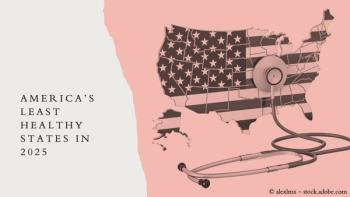
HIMSS: Most healthcare leaders report qualifying for meaningful use stage one
A majority of healthcare leaders report that they have qualified for meaningful use stage one, according to results from the 24th Annual Health Information and Management Systems Society Leadership Survey.
A majority of healthcare leaders report that they have qualified for meaningful use stage one, according to results from the Annual Health Information and Management Systems Society (HIMSS) Leadership Survey.
Nearly two-thirds of health information technology (IT) professionals in provider organizations surveyed already have qualified for meaningful use stage one, and three-fourths indicate they expect to qualify for stage two in 2014. Additionally, 87% of respondents indicated they expect to complete their conversion to ICD-10 by October 2014.
“With more than half of the respondents reporting that they have qualified for meaningful use stage one and 25% saying that they will invest a minimum of $1 million to achieve stage two, it seems that we have reached a tipping point where initial government investments are beginning to pay off and meaningful use is becoming ingrained in the healthcare industry,” said Jennifer Horowitz, senior director of research, HIMSS Analytics. “We’re seeing a pattern of consistent concern over IT staffing shortages. Clinical application support, network support, and clinical informatics professionals are in high demand.”
As the role of IT in healthcare grows, respondents continued to express concerns about IT staffing shortages. Fifty-one percent of those surveyed indicate that they plan to increase their IT staff over the next year, but 21% say are concerned that they won’t be able to secure the IT staff needed to successfully achieve their IT objectives.
Other key survey results:
- Health information exchanges: 51% of respondents report that their organization participates in at least one exchange in their area, a finding that is slightly increased from last year’s participation level.
- ICD-10: 47% of respondents to this study indicate that implementing CPT-10/ICD-10 continues to be the top focus for financial IT systems.
- Effect of IT on patient care: Respondents were most likely to indicate that IT can affect patient care by improving clinical/quality outcomes, reducing medical errors, or helping to standardize care by allowing for the use of evidence-based medicine.
- Role of clinicians: Clinicians are active participants in many aspects of IT use at their organizations, including selecting IT systems for use in their department and acting as project champions.
- Security concerns: 19% of respondents indicate that their organization has experienced a security breach in the past year. Respondents were most likely to indicate that securing information on mobile devices is the top security concern at their organization.
- Organizational infrastructure: Almost one-fourth of respondents (22%) indicate that a focus on security systems is their current key infrastructure priority.
- IT governance: There continues to be a strong level of integration between an organization’s overall strategic plan and its IT strategic plan; half of respondents report that their IT plan is part of their overall organizational strategic plan.
- Senior IT executive responsibilities: Executives were most likely to report that they play a role in contributing to overall business strategy and driving value from IT investments.
- External areas of responsibilities: Nearly all senior IT executives reported that they were responsible for at least one IT area outside of the traditional IT department, primarily telecommunications.
- Consumer attitudes about health IT: On a scale of one to seven, where one is of no importance and seven is a high degree of importance, IT executives recorded an average score of 4.94 with regard to the importance that patient/consumer attitudes have on adoption of new technology.
“The concerns voiced in the survey are the same concerns we’re hearing from our healthcare customers every day,” said Steve Fanning, vice president, Healthcare Industry Strategy, Infor. “There’s a growing realization that smart IT investments don’t just make business easier or lower costs for the organization; they directly impact patient care. Our customers are concerned with how they can use IT to accomplish more with less, while at the same time security to ensure the confidentiality of patient information.”
The HIMSS Leadership Survey was sponsored by Infor. Visit
Follow Medical Economics on
RELATED CONTENT
Coverage from HIMSS12
HIMSS: Online tool determines financial effect of ICD-10
Newsletter
Stay informed and empowered with Medical Economics enewsletter, delivering expert insights, financial strategies, practice management tips and technology trends — tailored for today’s physicians.








